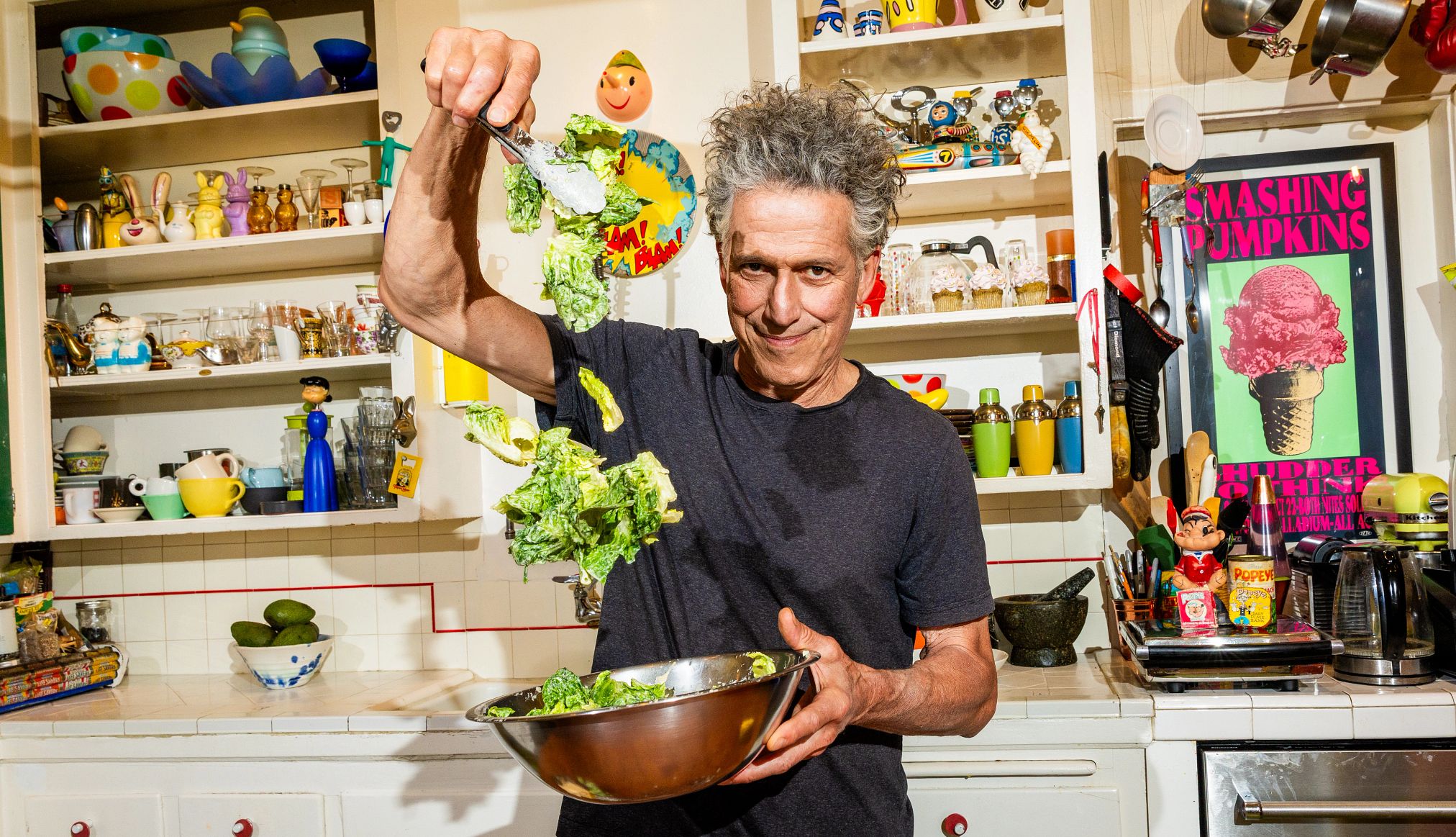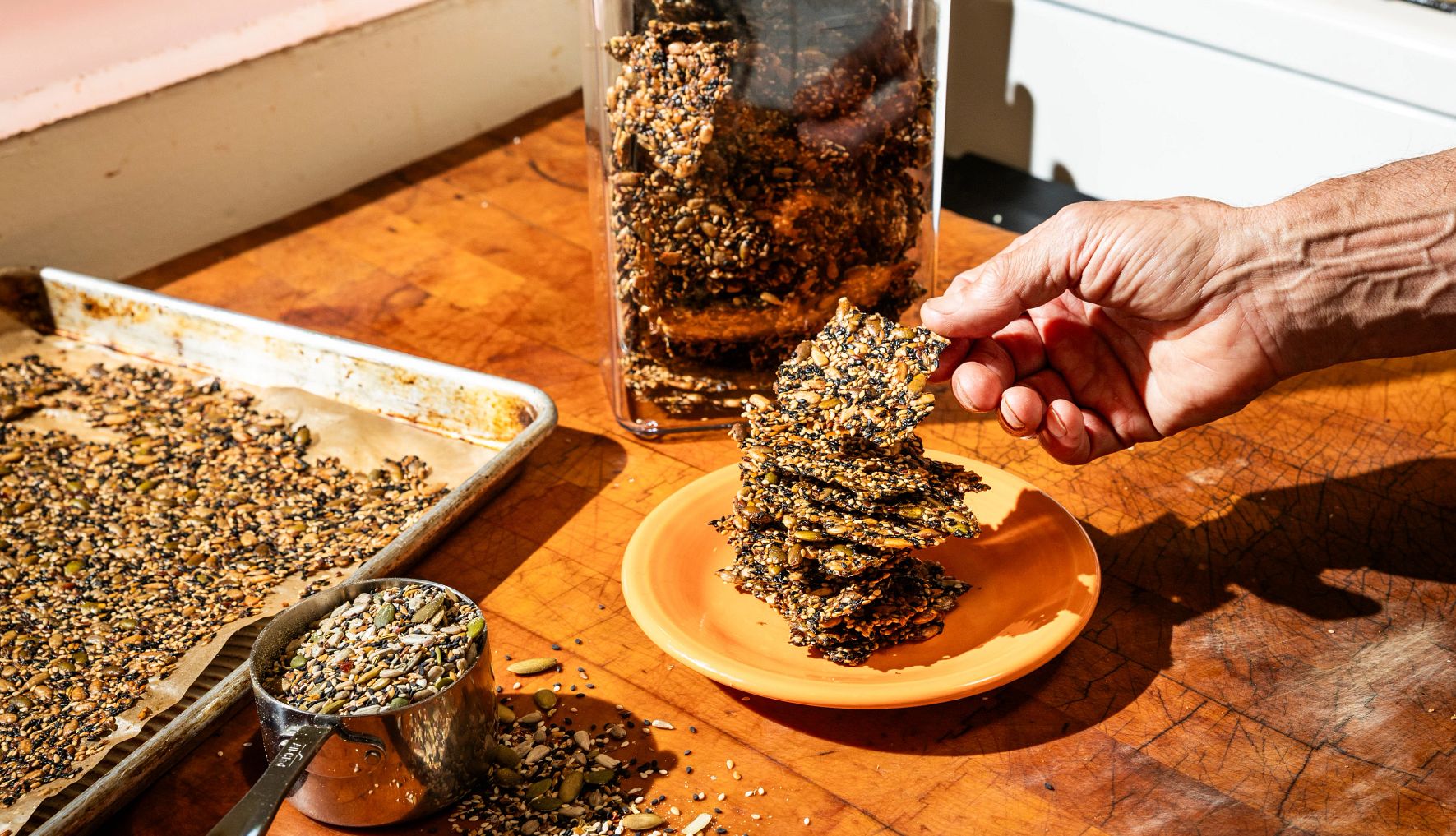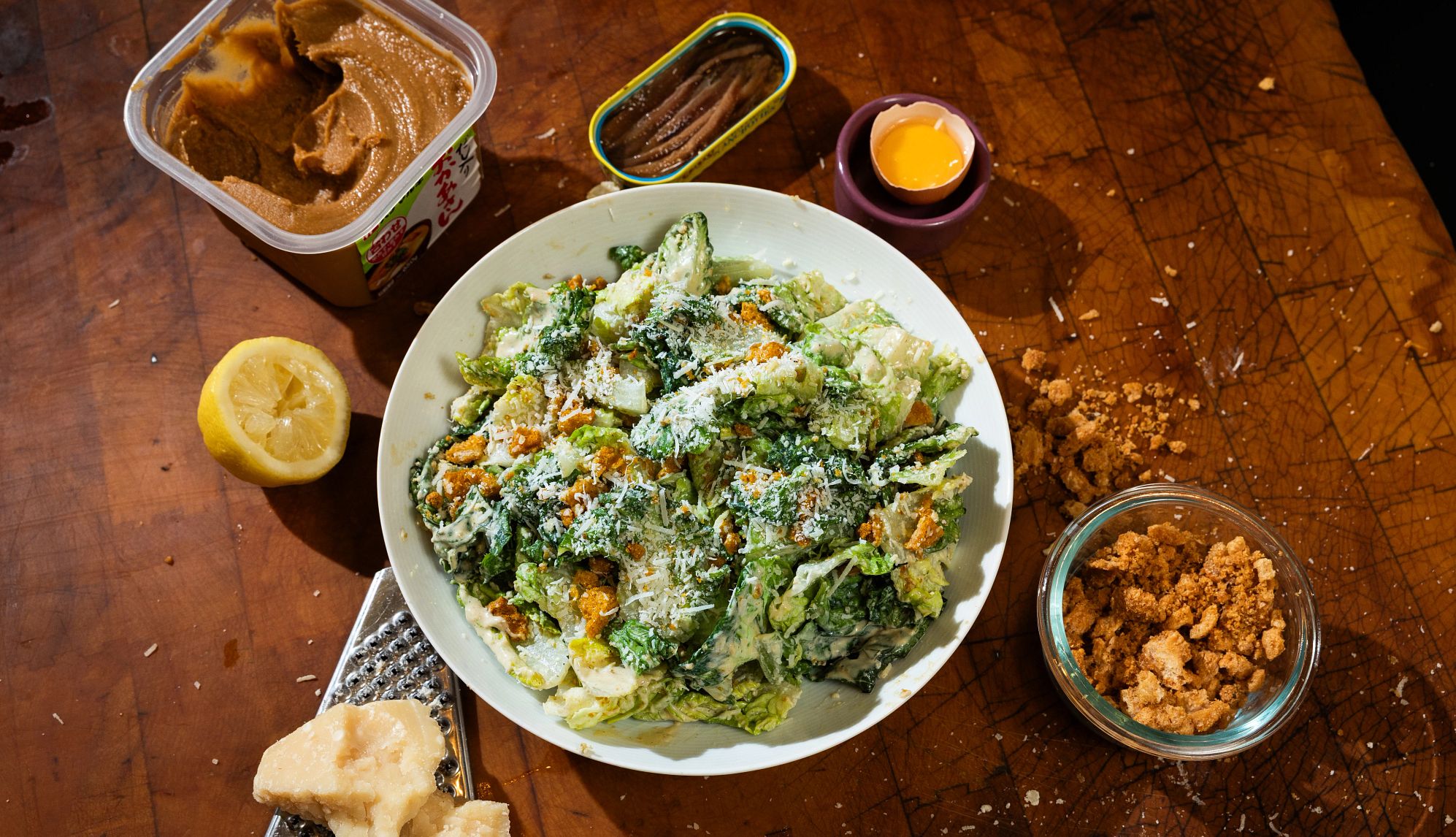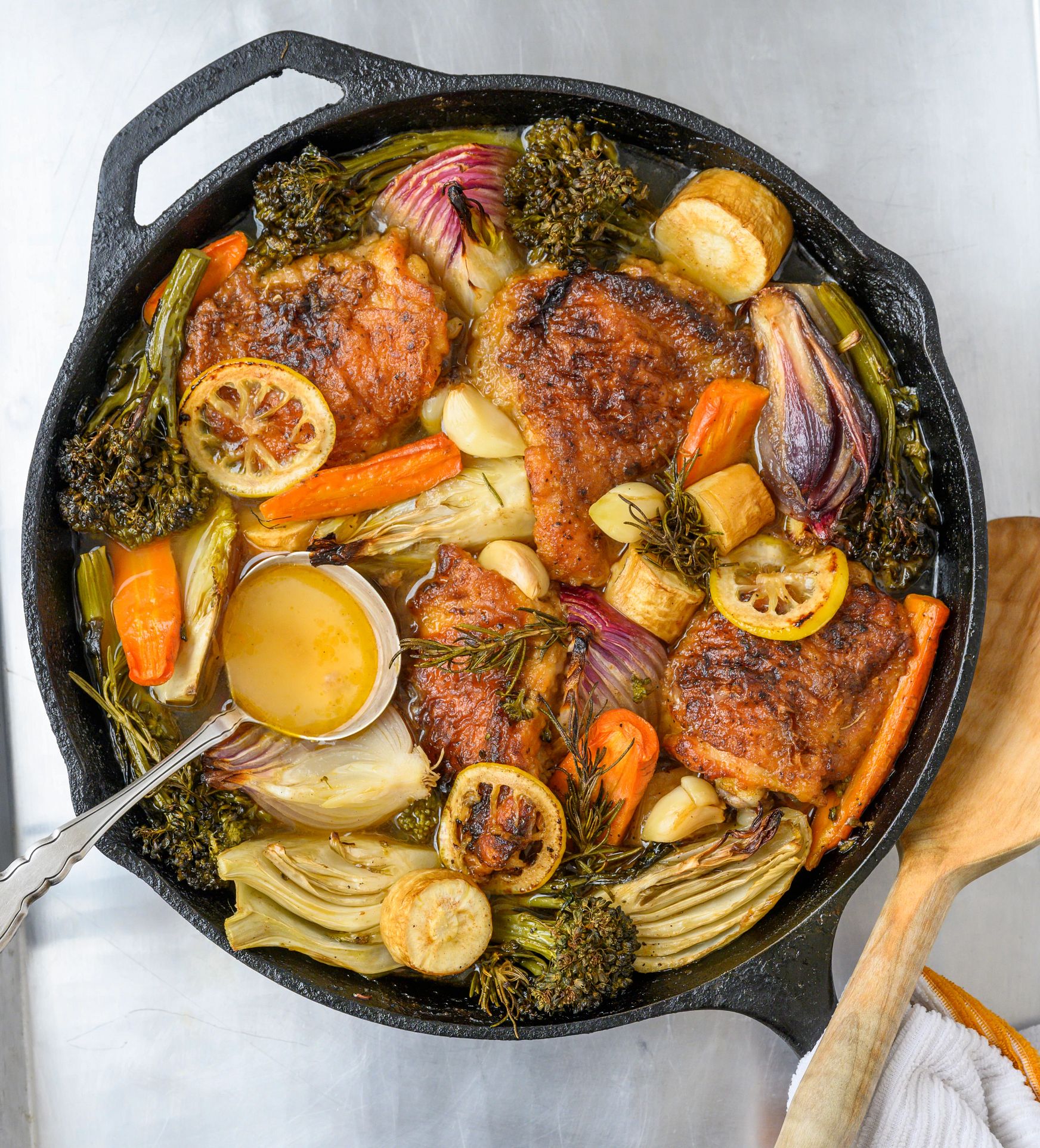AARP Hearing Center


Jump to recipes
Seed Crackers • The Ultimate Low-Carb Caesar Salad • Braised Chicken Thigh Dinner
“You are prediabetic.”
Those are three words I never expected to read. After all, I’ve always kept myself relatively trim — at the time of my diagnosis, I was carrying 186 pounds on a 5-foot-11-inch body. At 67, I’d exercised like a fiend my whole life, and as a chef and former Food Network host I ate really well — or so I thought. But there they were, three words scrawled by my doctor, next to a slowly ascending line on my hemoglobin A1c chart breaking through the prediabetes threshold: an average blood sugar level of 5.7 percent.
I had never given a moment of thought to prediabetes. Chances are, neither have you: More than 1 in 3 American adults — approximately 98 million people — have prediabetes, and 80 percent of them don’t know it.
“Prediabetes” sounds relatively innocent — it’s just a warning sign, right? But the reality is a bit darker. Up to 70 percent of people diagnosed with prediabetes will go on to develop full-blown diabetes. And prediabetes is an express elevator to heart disease. Half of all people with prediabetes who don’t take steps to address their condition will go on to develop cardiovascular disease within the next five years.
Serious stuff. But my doctor’s advice was vague: “Watch your sugar and white carb intake” was about all he had to offer.
I decided to fully educate myself on prediabetes — and use my skills as a chef to cook my way free of it.
What is prediabetes?
It helps to think of prediabetes as a long-smoldering ember that may or may not turn into a full-blown fire.
When we eat carbohydrates — macronutrients found in everything from apples to chocolate cake — our digestive system breaks them down into simple forms of sugar, primarily glucose, which is then absorbed through the small intestine and into the bloodstream. As the level of sugar in our blood increases, the pancreas releases insulin, a hormone that helps cells absorb the glucose and either burn it off as energy or store it in our muscles and liver for later use.
Carbs are digested quickly, while fat, protein and fiber move through us more slowly. So the higher the carb content of a meal, and the lower the fat, protein and fiber content, the faster those carbs are absorbed, and the faster they cause our blood sugar to spike.
As we age, and when we eat lots and lots of carbohydrates, the pancreas grows a little tired and lazy; it’s no longer as effective at picking up on blood sugar rushes and releasing insulin to manage them. In addition, our cells can develop insulin resistance, which means they become less effective at reacting to insulin’s orders. A less active pancreas, less sensitive insulin receptors and a continued onslaught of carbs lead to elevated levels of blood sugar, which can lead to prediabetes and, eventually, type 2 diabetes.
Being overweight has a similar effect. While the pudginess you see is likely to be around your midsection, weight gain happens throughout the body, especially in the liver and muscles — the very same storage facilities we’re supposed to be using for excess sugar. The more fat we have in those locales, the less room there is to store blood sugar.
The standard advice is pretty straightforward: Eat fewer carbs so you have less blood sugar to store, and exercise more to lose weight and build muscle, thereby creating storage space for your blood sugar. Your doctor might also want to prescribe metformin, which helps the body’s insulin receptors regain their sensitivity, or a GLP-1 inhibitor, like Ozempic or Wegovy, which helps boost insulin levels and reduces appetite, though neither has been approved by the U.S. Food & Drug Administration (FDA) to fight prediabetes and would probably not be covered by insurance.
Healthy ways to lower carbs in your diet
They say that to a man with a hammer, everything looks like a nail. Well, to a man with a spatula, everything looks like his next meal. I already exercised daily, and I wanted to do everything within my power to avoid taking medication, so I decided to lean on my chef’s toolbox and knowledge to remake my diet. With pigheaded determination, I set out to minimize the unnecessary carbs I was eating. Instead of taking medication, I was going to cook my way out of prediabetes.
For as far back as I can remember, my go-tos have been fresh-pressed fruit juices, homemade granola, sandwiches with lean protein and avocado, pan-seared fish with roasted potatoes, homemade pasta sauces and stir-fries with rice. Of course, I’ve always had a midmorning snack and a midafternoon pick-me-up cookie or the like with my coffee, and I’d be remiss if I didn’t admit to occasional dalliances with sweets, a weakness for French fries and a love affair with wine.
The common denominator in my “healthy” diet? Carbs, carbs, carbs!
When I penciled out the carbs in my diet — by reading the labels on the packaged foods I was eating and googling foods like potatoes, rice and pasta — I realized my average daily count was close to double the FDA’s guideline of 275 grams. No wonder I was prediabetic!
Eliminating the sweets, reducing empty carbs like fries, and cutting back (some!) on the wine would help. But most of the carbohydrates I was eating came from “healthy” foods: fruit juices, vegetable-laden pasta and rice dishes, and my crusty home-baked bread. And here’s the thing: I liked the way I ate. I wasn’t about to go on some fat-based keto program or a paleo diet that had me foraging around the freezer for elk loin. Instead, I established a few simple guidelines:
- No more than 100 grams of carbs per day
- No weird diets or depressing stretches of hunger
- No ultraprocessed or prepackaged foods, even if they were labeled “keto-friendly” (many still contain hidden carbs)
Indeed I would change how I ate, but not how well I ate.
Three months later — after equal measures of altered eating habits, creative cooking and self-discipline — I had turned the trajectory of my A1c graph upside down, and in the process effortlessly dropped 15 pounds, returning to the weight I was in my 40s. Three months after that, my A1c level dropped further to well within the comfort zone, and my new weight held steady — due solely to a radical reset of what I ate.
I’m here to tell you, you can do this. Here’s the way to get started:
How to cook away your prediabetes
1. Get tested
Ask your doctor for an A1c test so that you have a benchmark. Since it takes three months to move the needle, book yourself a follow-up blood test in three months, and dig in for the short haul.
2. Understand your carbs
Get familiar with which foods and drinks are naturally high in carbs— and the difference between “good” (complex) carbs and “bad” (simple) carbs. In a nutshell, the good ones are whole foods that contain lots of fiber, which slows the speed at which the body breaks down carbs and turns them into sugar. The bad ones are refined carbs, like flour, white rice and sugar — and everything made with them.







































































You Might Also Like
25 Processed Foods That Are Surprisingly Healthy
Surprising health benefits of processed foodsCan I Reverse Prediabetes?
Small changes can prevent your numbers from rising
25 Foods That Won't Cause Weight Gain
Eat these to your heart's content